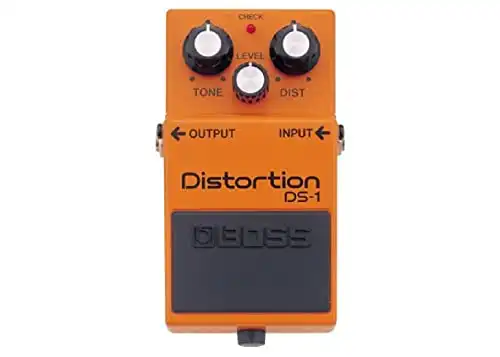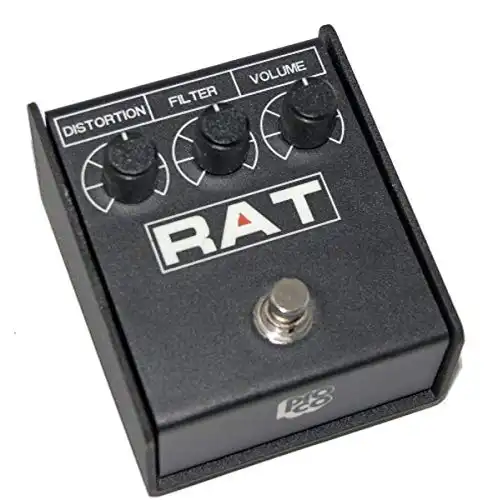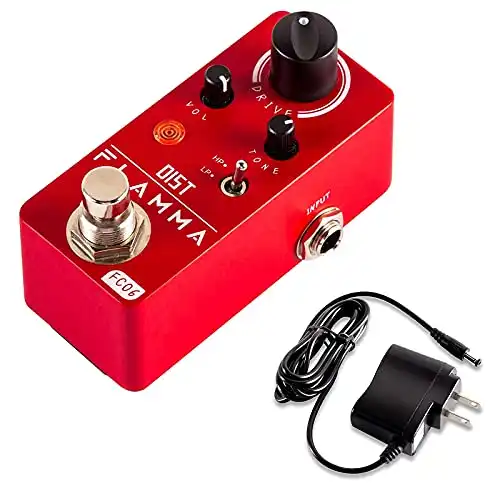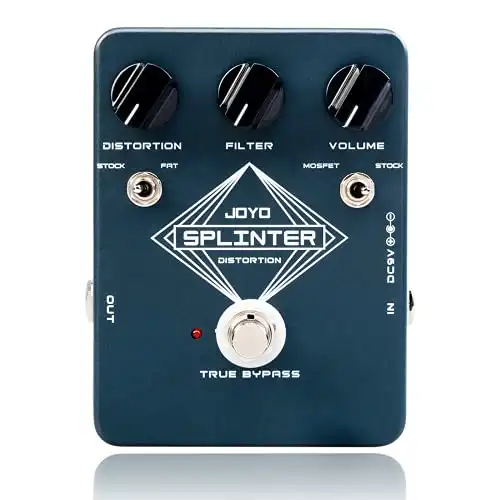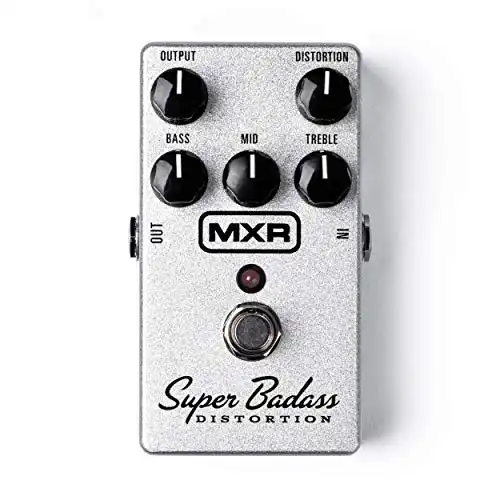Distortion pedals are essential tools for any budding electric guitarist. They can transform your clean guitar tones into gritty, powerful sounds characteristic of rock, metal, and various other genres. This article will look at the best distortion pedals for beginners.
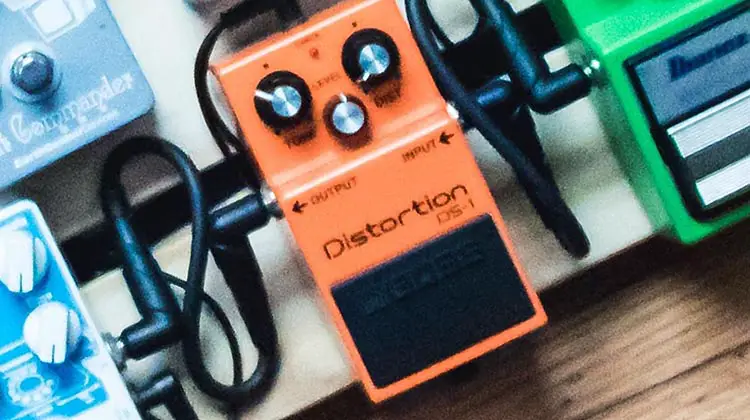
As a beginner, finding the best distortion pedal can be a game-changer in your musical journey. In this article, we’ll guide you through selecting the perfect distortion pedal for your needs.
Why Do Beginners Need Distortion Pedals?
As a beginner guitarist, you might wonder why distortion pedals are relevant to your learning experience. Here’s the scoop: distortion pedals aren’t just for shredding solos or rocking out on stage. They can significantly enhance your practice sessions and creativity.
Beginners often find that playing with distortion can make practicing more engaging and enjoyable. The saturated tones can mask imperfections in your playing and make your chords and notes sound more impressive. Experimenting with different distortion settings can inspire creativity and help you discover your unique sound.
Factors to Consider When Choosing a Distortion Pedal
Now that you understand the importance of distortion pedals for beginners, let’s explore the key factors to consider when making your selection:
- Budget: Determine how much you’re willing to spend. Distortion pedals come in various price ranges, so there’s something for every budget.
- Type of Distortion: Consider the kind of distortion you prefer. Some pedals offer classic rock distortion, while others provide a more aggressive, metal-oriented sound.
- Ease of Use: Look for pedals with user-friendly controls, especially if you’re new to using effects pedals.
- Build Quality: A durable pedal will withstand the rigors of practice and performance.
Distortion, Overdrive, and Fuzz: Understanding the Differences
Before we proceed further, it’s essential to distinguish between three common terms in the world of guitar effects: distortion, overdrive, and fuzz. While they all add grit and saturation to your guitar tone, they have distinct characteristics.
- Distortion: Distortion typically provides a more aggressive and heavily saturated sound compared to overdrive. It compresses the signal, resulting in sustain and a thicker tone. Distortion is often associated with rock and metal genres.
- Overdrive: Overdrive pedals produce a smoother and more subtle form of saturation. They emulate the warm, natural breakup of a tube amplifier when pushed to its limits. Overdrive is commonly used in blues and classic rock.
- Fuzz: Fuzz distortion is characterized by its extreme and fuzzy sound. It creates a square-wave clipping effect, resulting in a thick, sustaining, and sometimes chaotic tone. Fuzz is popular in psychedelic and garage rock music.
Understanding these distinctions can help you choose the right pedal for your desired sound.
Two Best Historical Distortion Pedals
Before we dive into the world of distortion pedals for beginners, let’s take a moment to appreciate two iconic distortion pedals that have played a significant role in shaping the sound of rock music. Legendary guitarists have used these pedals and have left an indelible mark on the history of guitar effects.
Boss DS-1
The Boss DS-1, released by Roland in 1978, is one of the world’s most widely produced and recognized distortion pedals. Its bright orange casing is iconic, and its sound has been used in various music styles, from rock and punk to metal and beyond. The DS-1 is known for its crisp, cutting distortion that adds an edge to guitar tones. Guitarists like Kirk Hammett and John Frusciante have incorporated the Boss DS-1 into their rigs, contributing to its legendary status.
Pro Co RAT
The Pro Co RAT, first introduced in the late 1970s, is a legendary distortion pedal known for its distinctive and gritty distortion sound. It has been a favorite among rock and alternative rock guitarists for decades. The RAT pedal’s simple but effective design and ability to cut through the mix with a sharp, saturated tone have made it a classic choice. Artists like Kurt Cobain and Thurston Moore have relied on the Pro Co RAT to shape their signature sounds.
Top Picks for the Best Distortion Pedals for Beginners
Let’s introduce you to some fantastic distortion pedals tailored for beginners.
Please note that product availability on Amazon can change, and it’s essential to read customer reviews and check the latest rankings and prices to make an informed decision. Additionally, consider checking other reputable online retailers and local music stores for these pedals.
Best Affordable and Easy-to-Use Beginner Distortion Pedal: FLAMMA FC06 Distortion Pedal
Our first recommendation is the FLAMMA FC06 Distortion Pedal. This budget-friendly option offers a wide range of distortion tones, from classic rock crunch to modern high-gain sounds. It’s designed with user-friendly controls, making it easy for beginners to dial in their desired sound. The FC06’s affordability and versatility make it an excellent choice for those exploring different distortion textures.
Best Versatile Beginner Distortion Pedal: Joyo Splinter Distortion Pedal
Next up, we have the Joyo Splinter Distortion Pedal. The Joyo Splinter is known for its aggressive and high-gain distortion, making it perfect for rock and metal enthusiasts. It provides a wide tonal range and responsive EQ controls, allowing you to shape your ideal distortion sound. The Splinter’s affordability and sonic versatility make it a compelling choice for beginners seeking heavy distortion.
Best Premium Quality Distortion Pedal for Beginners: MXR M75 Super Badass Distortion Pedal
For those who want premium quality without sacrificing simplicity, consider the MXR M75 Super Badass Distortion. This pedal offers a wide range of distortion tones, from vintage warmth to modern crunch. Its rugged build quality ensures durability, and its intuitive controls make it easy for beginners to explore different sonic possibilities. The MXR M75 is perfect for those serious about their guitar journey and tone exploration.
How to Use a Distortion Pedal Effectively
Once you’ve chosen your distortion pedal, you must know how to use it effectively. Here are some tips:
- Start with Low Gain: If you’re new to distortion, begin with low gain settings and gradually increase the intensity as you become more comfortable.
- Experiment with EQ: Most distortion pedals have EQ controls. Tweak these to shape your sound to perfection.
- Practice with Clean Tones: Don’t rely on distortion as a crutch. Practice with clean tones to develop your technique.
- Beware of Noise: High gain settings can introduce noise. Invest in noise reduction if needed.
Maintenance and Care
To ensure your distortion pedal stays in top shape, follow these maintenance tips:
- Clean the Contacts: Periodically clean the pedal’s contacts and switches to prevent crackling or loss of signal.
- Check the Power Supply: Use the correct power supply to avoid damaging the pedal.
- Store Properly: When not in use, store your pedal in a dry, cool place to prevent dust and moisture buildup. If battery-powered, disconnect the guitar cables from the pedal when not used. This will save battery life. Remove the battery if you don’t plan on using the pedal for a long time. There’s nothing worse than finding a corroded battery destroying your favorite pedal.
Distortion Pedal FAQs
How do I connect a distortion pedal to my amp?
To connect a distortion pedal, use a standard guitar cable. Plug one end into your guitar, the other into the pedal’s input, and connect the pedal’s output to your amp.
Can I use a distortion pedal with an acoustic-electric guitar?
Yes, you can, but the results may not be as pronounced as with an electric guitar. Experiment to find a sound you like.
Are there distortion pedals that mimic specific guitar tones?
Yes, some pedals are designed to emulate iconic guitar tones from famous songs and artists. Look for pedals with presets or specific tone profiles.
Can I use a distortion pedal with a bass guitar?
While distortion pedals are primarily designed for electric guitars, some are suitable for bass. Look for pedals with a blend control to maintain low-end clarity.
Do I need an amplifier to use a distortion pedal?
Yes, you’ll need an amplifier to amplify the distorted signal produced by the pedal. It’s an essential part of the setup.
Conclusion
Choosing the best distortion pedal for beginners can significantly enhance your guitar journey. Whether you’re on a budget or looking for premium quality, there’s a pedal out there to match your needs. Experiment, discover your sound, and rock on!
Thank you for reading our guide to finding the best distortion pedal for beginners. We hope this article has provided you with valuable insights to kickstart your musical journey. Rock on!
